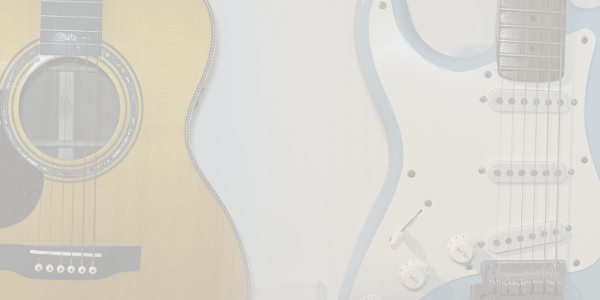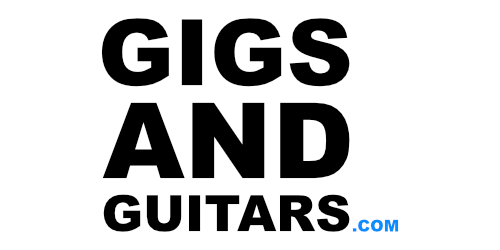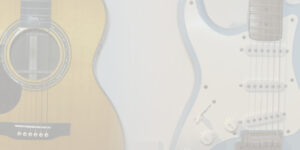
I’m Playing Naked! – How it helped improve my playing and tone!
Introduction
I’ve recently been trying something different: playing “naked”! Of course, I don’t mean without clothes—sorry if you pictured that! I mean using minimal effects and pedals. I tried using as little gear as possible to achieve the sound I wanted. After a few weeks of this experiment, I’ve learned some very interesting lessons. I thought I’d share why and how I did it, along with what I learned from the experience.
Stick with us; there’s a reason and logic behind this madness. Let’s explain why I tried this in the first place and what the initial goal was.
What Was the Goal in Playing Naked?
The main reason I wanted to start playing naked and use as little gear as possible is that I’ve been watching a lot of Joe Bonamassa videos recently and love his tone and the control he has over his guitars. I realized I was just leaving all the controls on 10 and using pedals to get my sound. The downside is that I have a wonderful custom-made amp (review coming shortly), and I wasn’t using it as intended. So, I decided to remove pedals, get an awesome sound from the amp, and then build on top of that.
Another reason was to feel more in control. Pedals are fun and creative tools, but it’s easy to get lost and rely on a pedal we might not need or buy a new pedal when we already have gear that can do the job. So, I wanted to strip back to basics and see what sounds I could achieve and determine what I needed to add, if anything at all.
A minor reason was to carry less gear and have a simpler setup. I’m not saying huge pedal boards aren’t fun, but when you’re in an 11-piece band, every inch of stage space is crucial. A small board and less gear are key.
How Did I Go About Playing Naked?
I started by looking at my current pedal board, which wasn’t very large to begin with—just four or five pedals. I identified the pedals I needed, removed everything else, played with that setup for a bit, and then slowly added anything that was missing.
The first run-through was just guitar and amp. I’ve been using my LT Custom Flying V, which is fitted with P90s. These are single coils but have the output of humbuckers, which helps clean up the sound with the volume control. I plugged the V into my Custom RD Amp (more on that soon), got the amp cooking and nice and loud, and it sounded wonderful! The volume was perfect, it cleaned up nicely, and the tone control on the V was very responsive. However, there was a problem.

Continued
My band plays a few songs in Eb. While I could carry a spare guitar and swap, being in a function band means we have to keep the music coming. So, I used a Drop Pedal for the one or two songs I have to tune down for. The first pedal on the board was a Digitech Drop Tune. Perfect! What else was missing?
Next, I wanted something fun for solos or to jazz up long rhythm sections. I considered a wah pedal and recently started using the Sonicake Wah and Volume (review coming soon). It’s super affordable and mega small, fitting perfectly on my minimal pedal board. The best of both worlds! It’s been really fun to have a wah pedal back on my board.
I also wanted a boost. I needed something that could do two jobs but only take up one space—something to hit for solos to bring the volume up and cut through the band, and to add more grit and overdrive occasionally. With a one-channel amp, I set it to get 90% of my tones from the volume control, then use a “pusher pedal” to drive the front end when needed.
What Lessons Did I Learn from Playing Naked?
The main lesson is that a good sound from your guitar and amp can take you a long way. You can achieve a lot with just a guitar, amp, and the volume and tone controls. Getting an amazing tone from your amp, and more importantly, one you’re happy with, will take you far. Then you can figure out what you need to add. There’s no point in having loads of toppings if the cake itself tastes bad.
One of the biggest lessons is to spend time with your amp. Sit with it for a few hours and learn how all the controls affect the tone. This will help you determine what you like and what changes you need to get the tone you want. Set up and tweak your amp the way you plan to play it live. Do you just crank it up and play it loud with the amp behind you? Then do that! Hire a rehearsal room for an hour or two, blast the amp at gig level, and get used to it.
For me, my band uses IEMs, and I run my amp through a Two Notes Captor straight to the front of the desk. So, when setting up the amp, I did the same. I set up the whole rig and used my IEMs to monitor it. This way, I know what it will sound like live.
Any Surprises?
Surprisingly, I removed the delay from my board. I discovered that I didn’t want delay—I wanted more reverb. I used to set my delays to a nice atmospheric, washy sound. However, I turned up the reverb on my amp, switched off the delay, and was just as happy. Another pedal I don’t need! This doesn’t mean I won’t want or use a delay on my board in the future—I might! I have an amazing dual-channel custom-made delay pedal I might use. But for now, I think everyone should ask themselves, “Do I want delay, or am I just after more reverb?”
Conclusion
Have you tried playing with less gear? Maybe even going fully digital? I find that when I go digital, my rig tends to become more complicated. So, I’m finding a good middle ground and think I’m almost there. I’ll be doing a full rig rundown soon, just waiting on a few more things to complete the setup. We’d love to hear about your rig! Is it big and complex, or small and nimble? Or somewhere in between? Let us know! Drop us an email or contact us on our Instagram.
If you want to support the site then please give us a follow on Instagram and subscribe to our YouTube.
Check out our other Articles here

